August 7, 2024
Native Plant Garden in HOA: Martin & Eileen Byhower
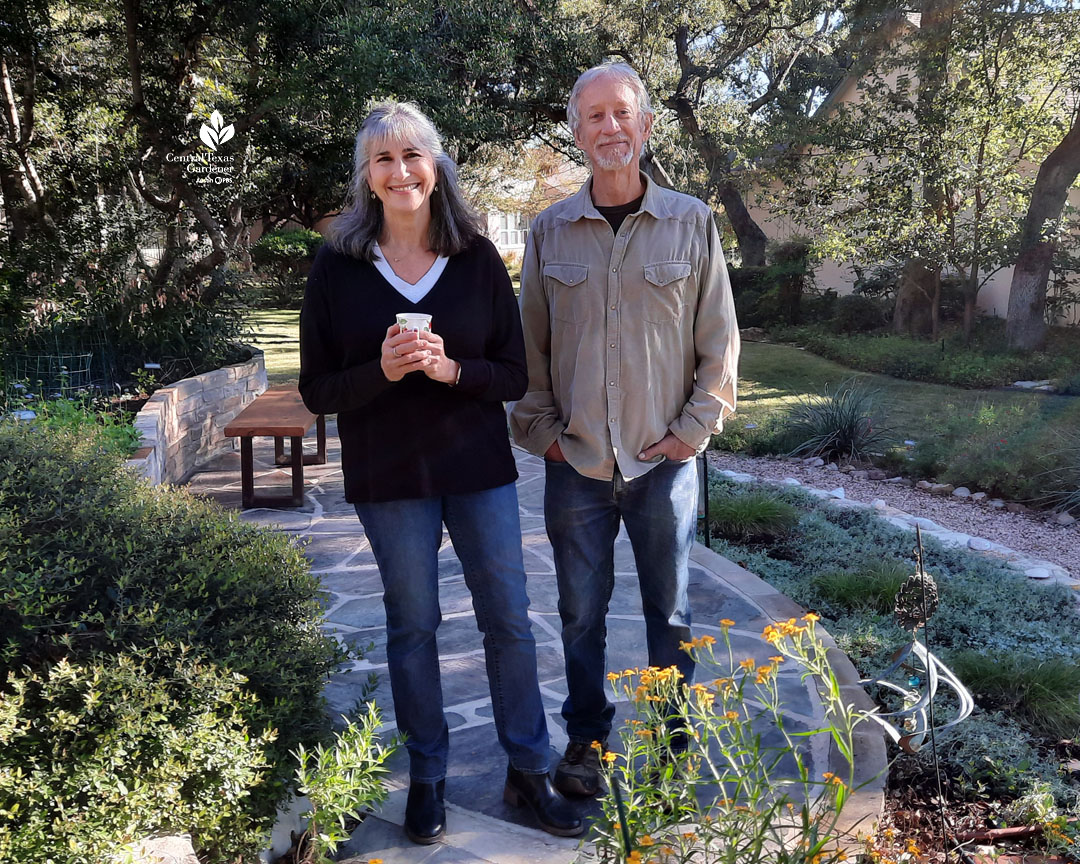
It’s not easy starting from scratch. And when you’re new to Texas, picking the right plants multiplies the challenge. But when Martin and Eileen Byhower arrived in Sun City, Martin couldn’t wait to adapt his horticultural know-how for lawn-free gardens under shady live oak trees in deer country.
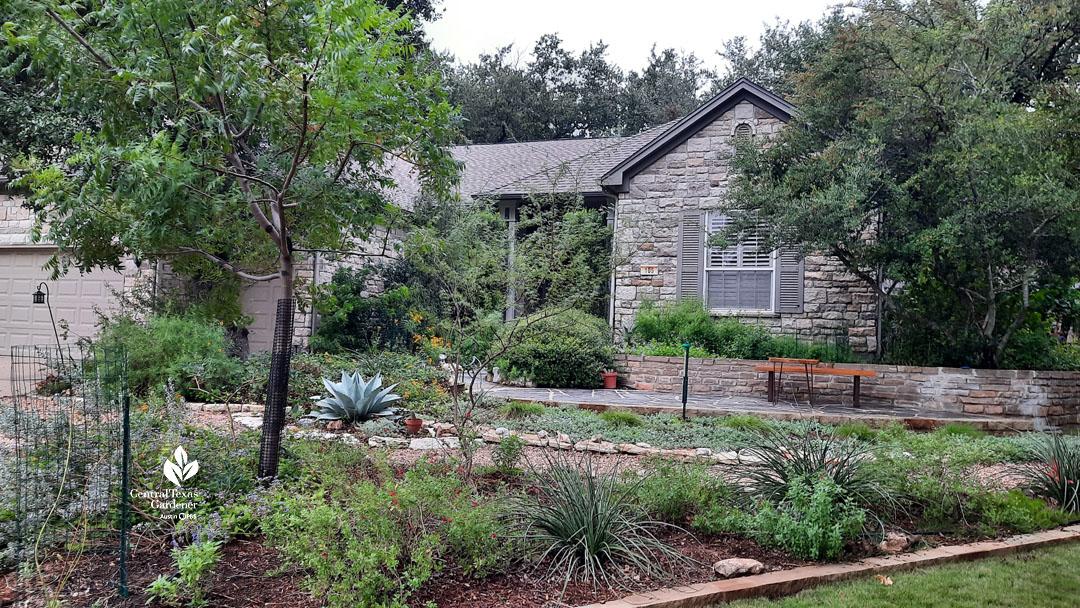
“I moved here from Southern California, where I was a science teacher and birding guide for about 30-odd years,” Martin told us in October 2023. “Here, I could be a kid in a candy store and start all over again with a whole new set of nature.”
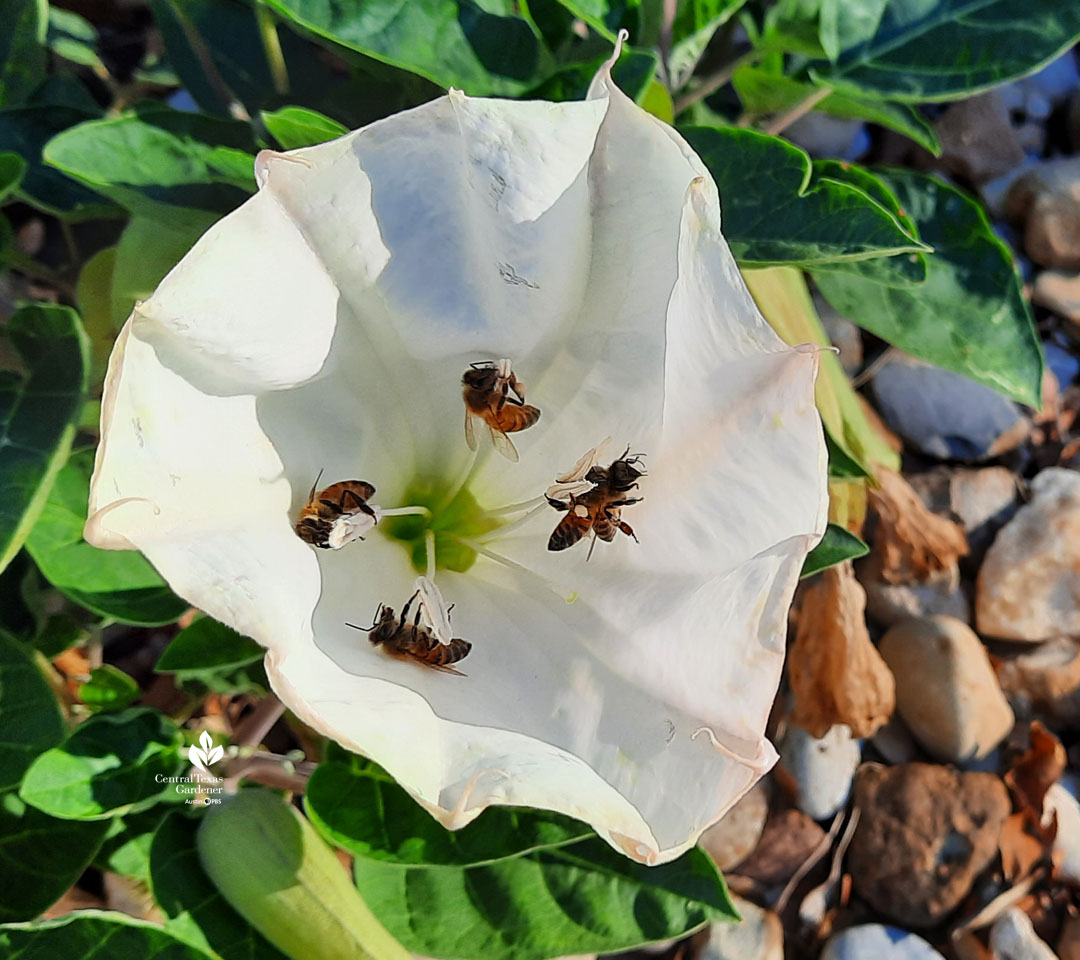
Bees tuck into datura’s velvety flowers by day, while moths and bats feed at night. To carry on his habitat restoration work in Georgetown, he joined the Williamson County Native Plant Society and qualified as a Goodwater Master Naturalist. He started a website with plant and animal lists, how-to guides, and resources. Now a landscape designer, he helps fellow gardeners work with native plants and habitat for all wildlife.
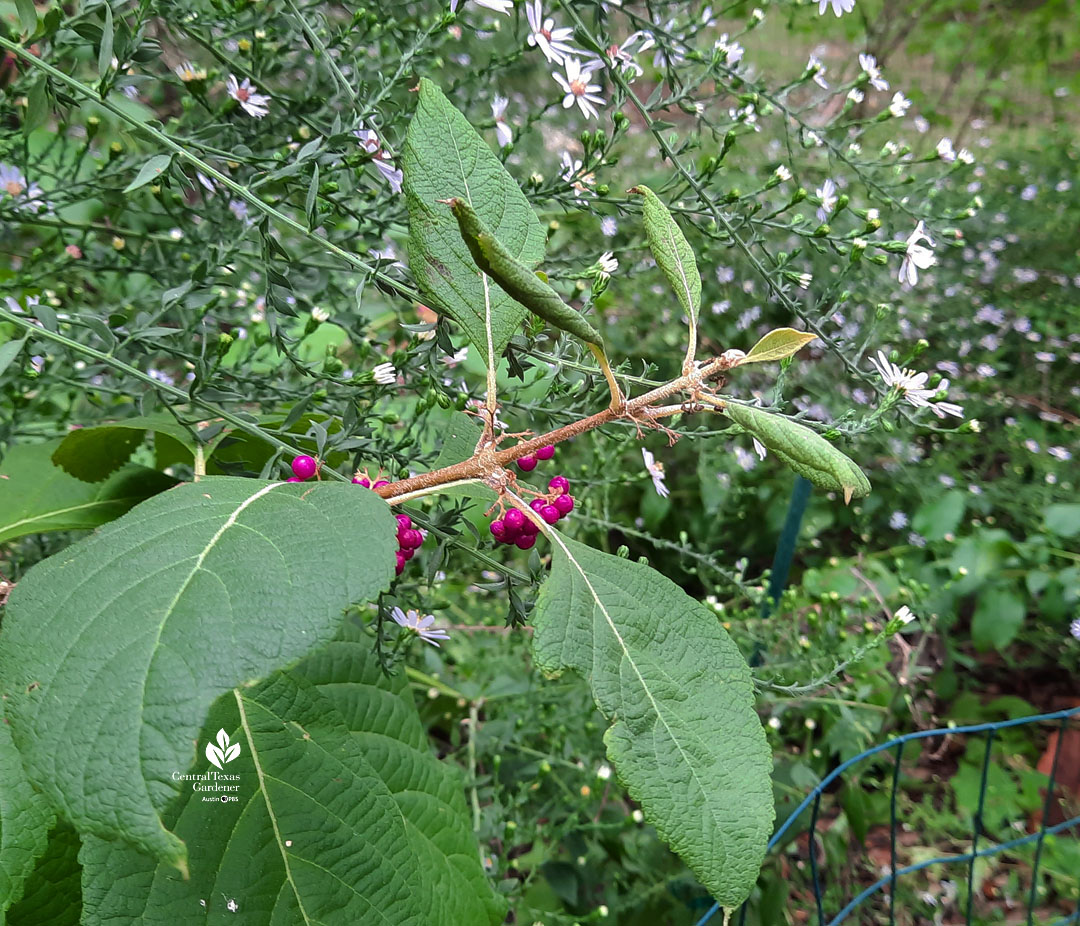
He’s an expert birding guide! I’ve learned a lot from his website and social media posts. In his part shade garden, native American beautyberry attracts pollinators to spring’s flowers and birds to fall’s magenta berries. Native Drummond’s aster feeds pollinators in fall and seed-eating birds in winter.
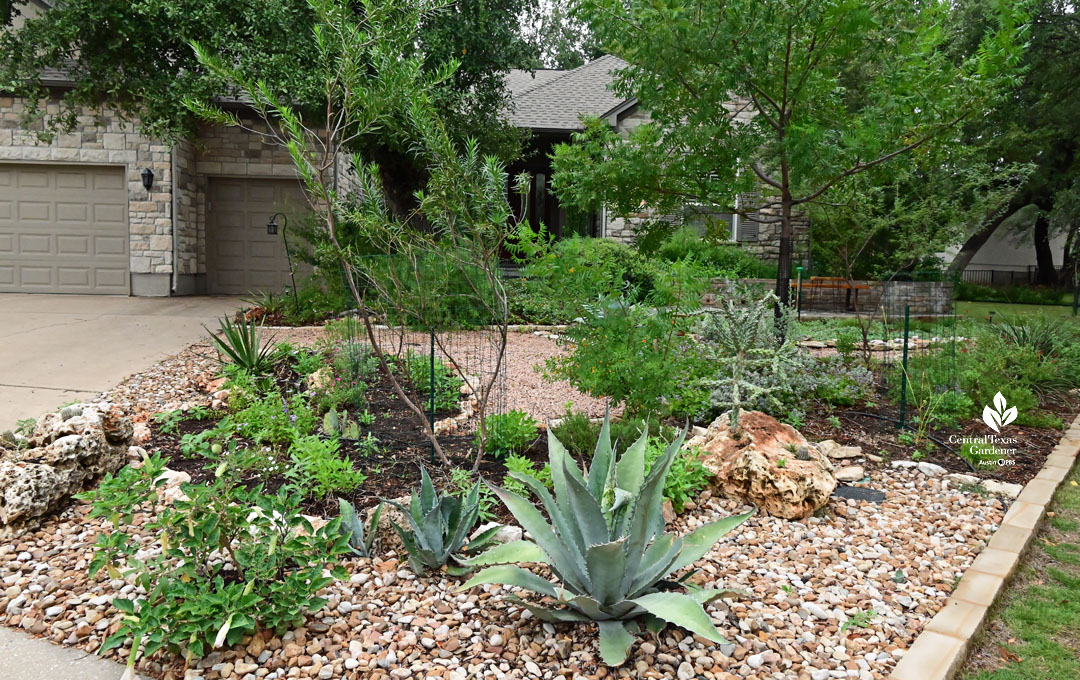
Creating plant diversity topped his list. “I’ve got about 150 different species of plants in my yard, blooming at different times of the year.” His sunny front curb bed features deer-resistant perennials and trees that provide seasonal color and flowering. Desert willow, flameleaf sumac, and fragrant mimosa cast dappled shade to structural succulents (including agaves, red yucca, niche cactus and cholla), and perennial lantana, salvias, datura and others.
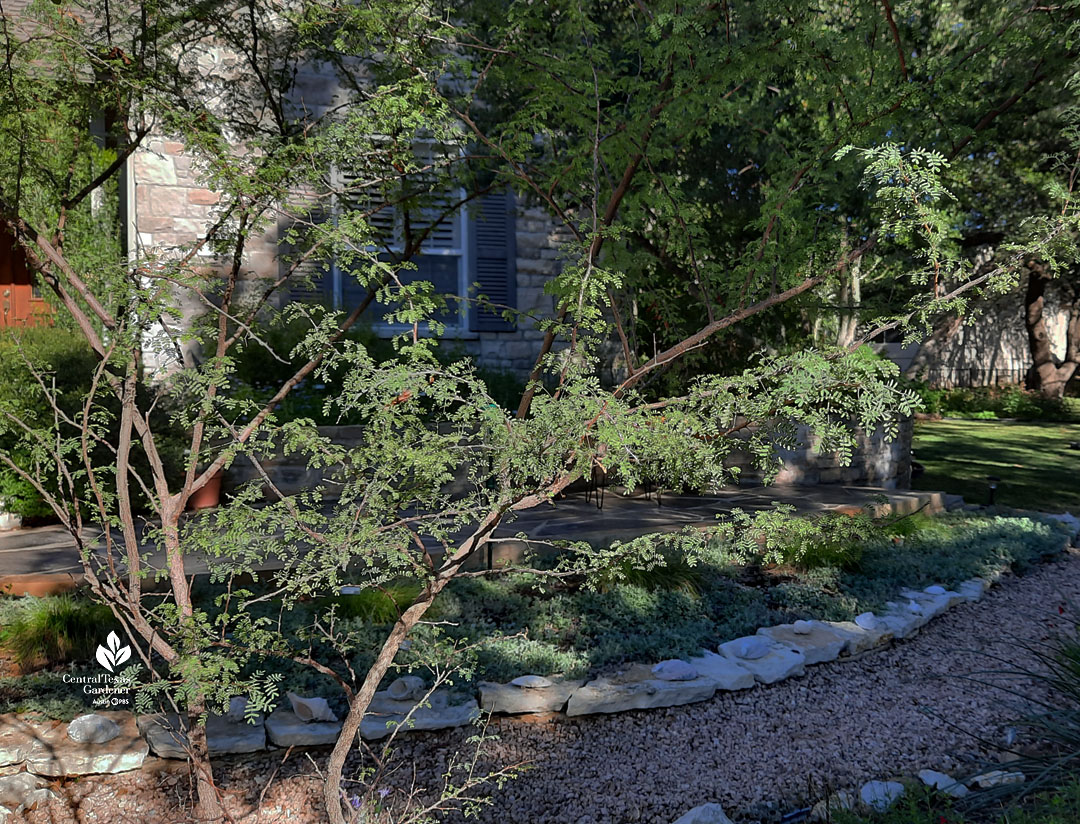
Sweetly-scented puffball pink flowers cover fragrant mimosa’s thorny branches from spring to summer, always a hit with butterflies and bees.
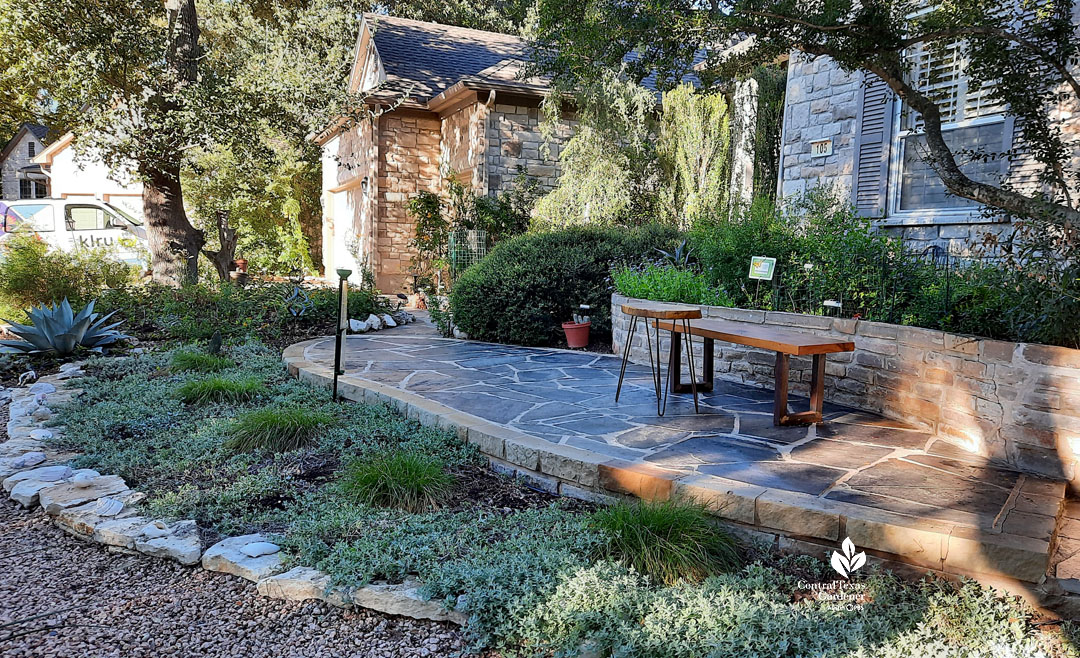
To comply with HOA rules, especially in front, he got a permit to remove all the turf. (According to State of Texas State Bill 198, an HOA cannot prohibit or restrict a property owner from using drought resistant landscaping or water-conserving turf). Along the front walkway of blue Oklahoma sandstone, he’s arranged woolly stemodia, sedges, silver ponyfoot, and red yucca.
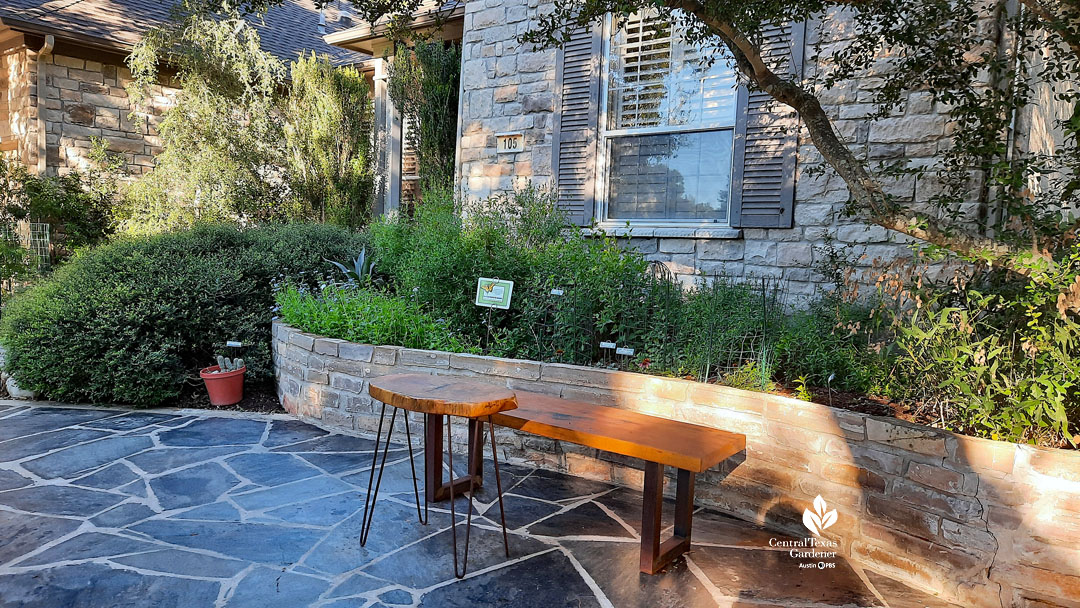
The raised planter includes Gregg’s mistflower, flame acanthus, and coneflowers (protected in small cages from deer). A graceful yaupon holly anchors the end, a winter favorite for migrating cedar waxwings. At the front door, he planted an esperanza, dwarf yaupon holly, and weeping yaupon. There’s also ‘Sky Pencil’ yaupon—not native—but a good one for narrow height.
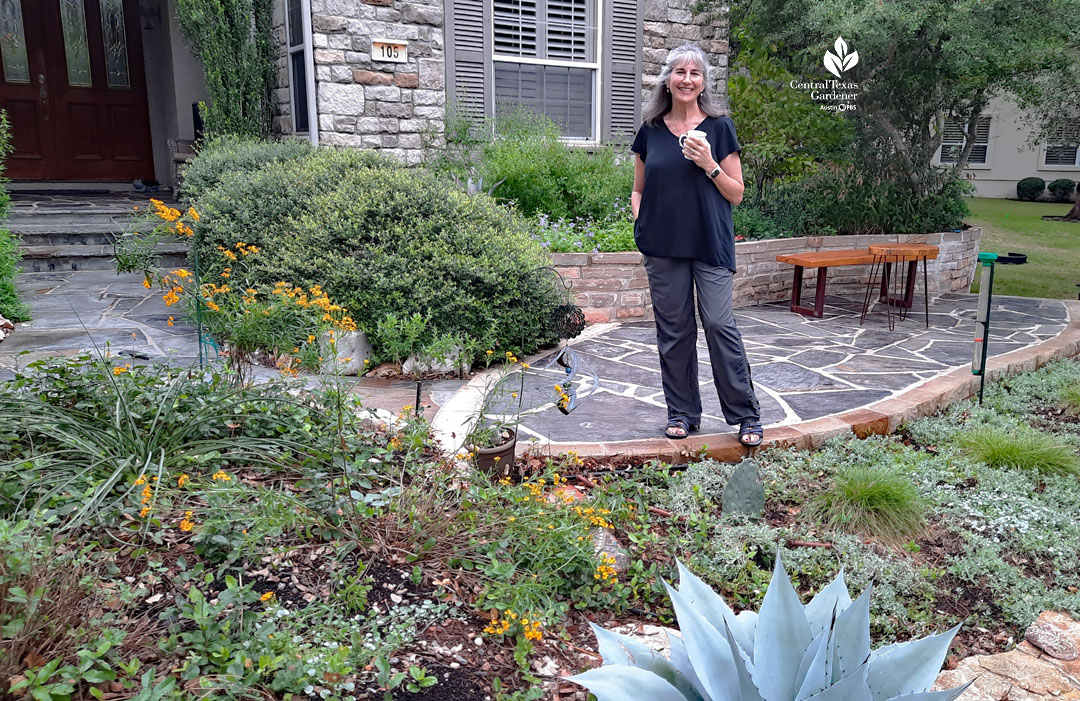
Multiple elevations with hardscape and plant heights promote visual and wildlife appeal, from ground-hugging lizards to birds. “So my yard could be an example of what is possible working within the confines of an HOA,” Martin said.
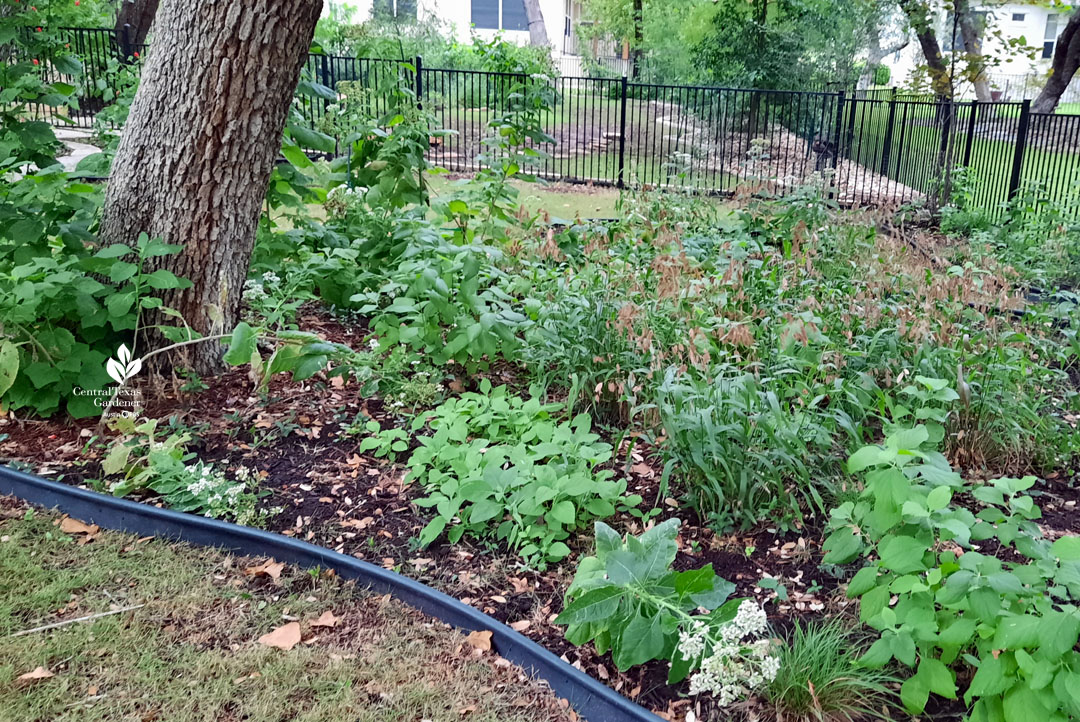
Next, what to do in shade? Around the live oak trees, he planted turk’s cap, inland sea oats, sedges, American beautyberry, and frostweed. He was careful not to disturb tree roots, only planting in between them.
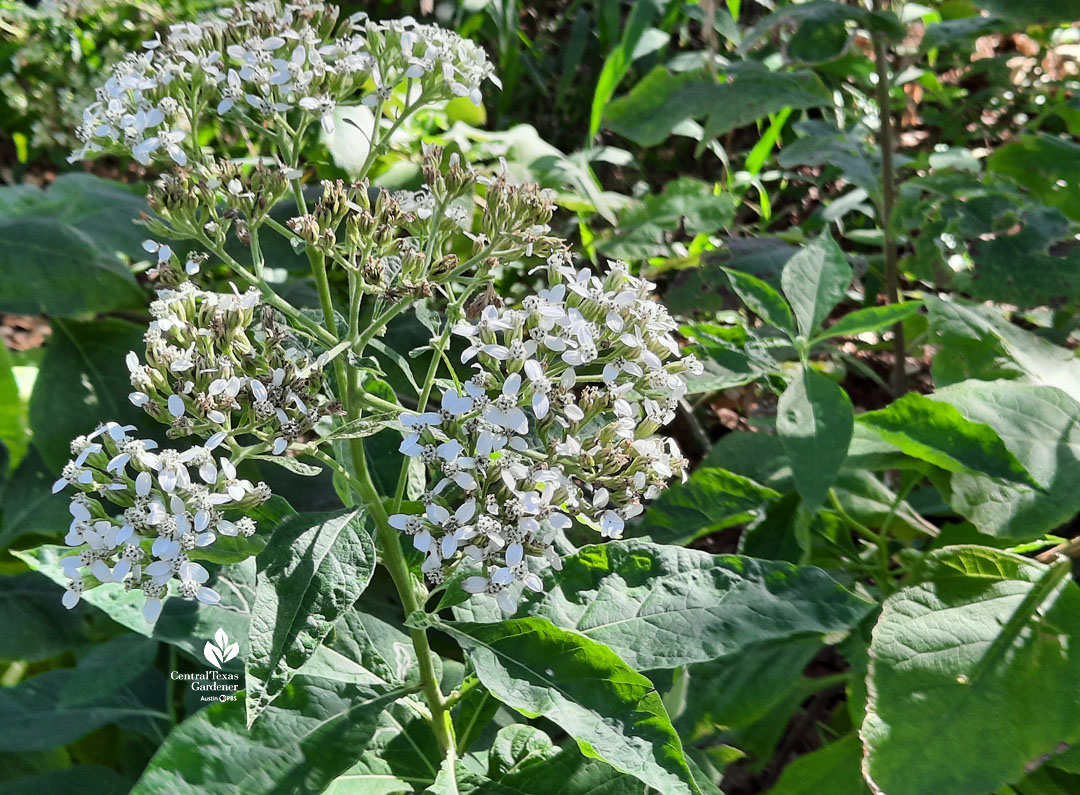
Deer resistant, fall-blooming frostweed is one of his favorites (mine, too, along with turk’s cap) for its white flowers that stand out in shade to herald migrating monarchs and all kinds of pollinators. It’s a stately plant, so I’ve placed mine at the back of a fence bed. This is also the magical “ice sculpture” plant after a deep freeze.
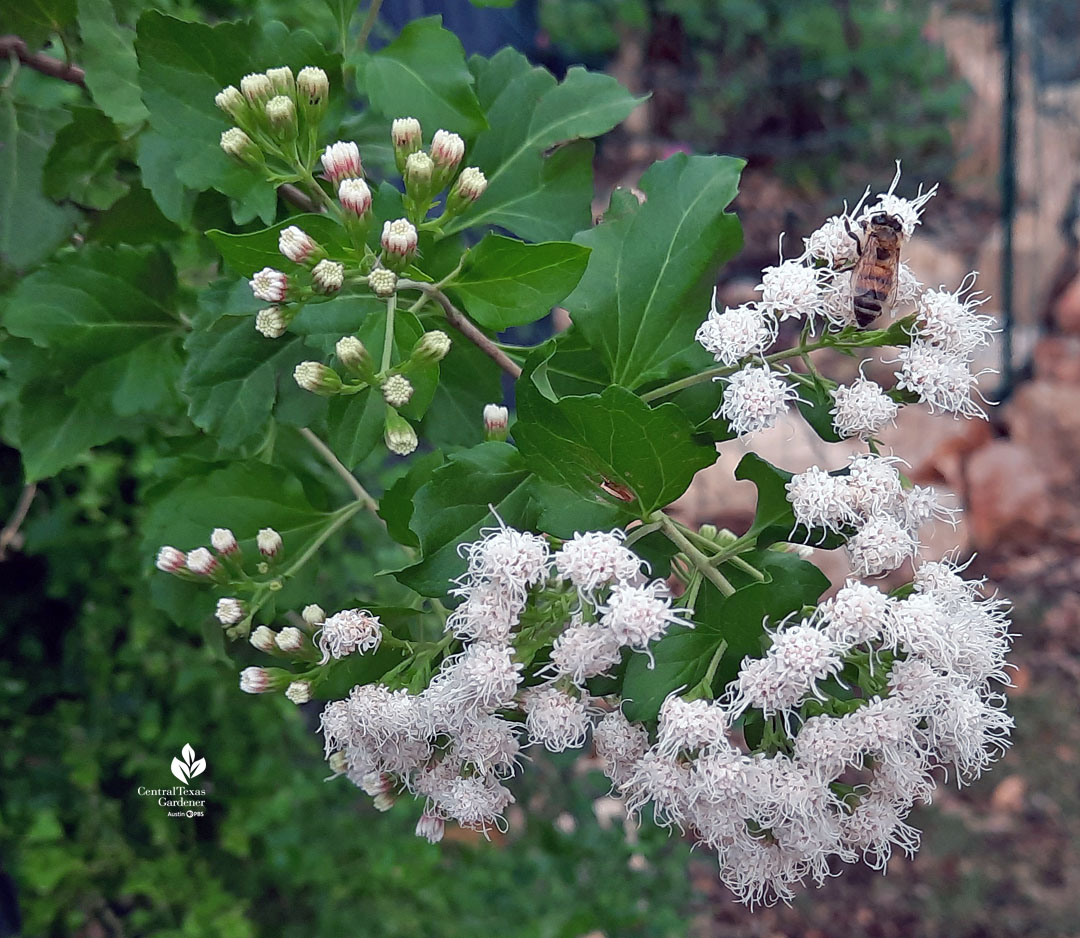
Deer-resistant fragrant mistflower’s (shrubby boneset) frothy white flowers join frostweed in fall to nourish wildlife as we head into cold weather.
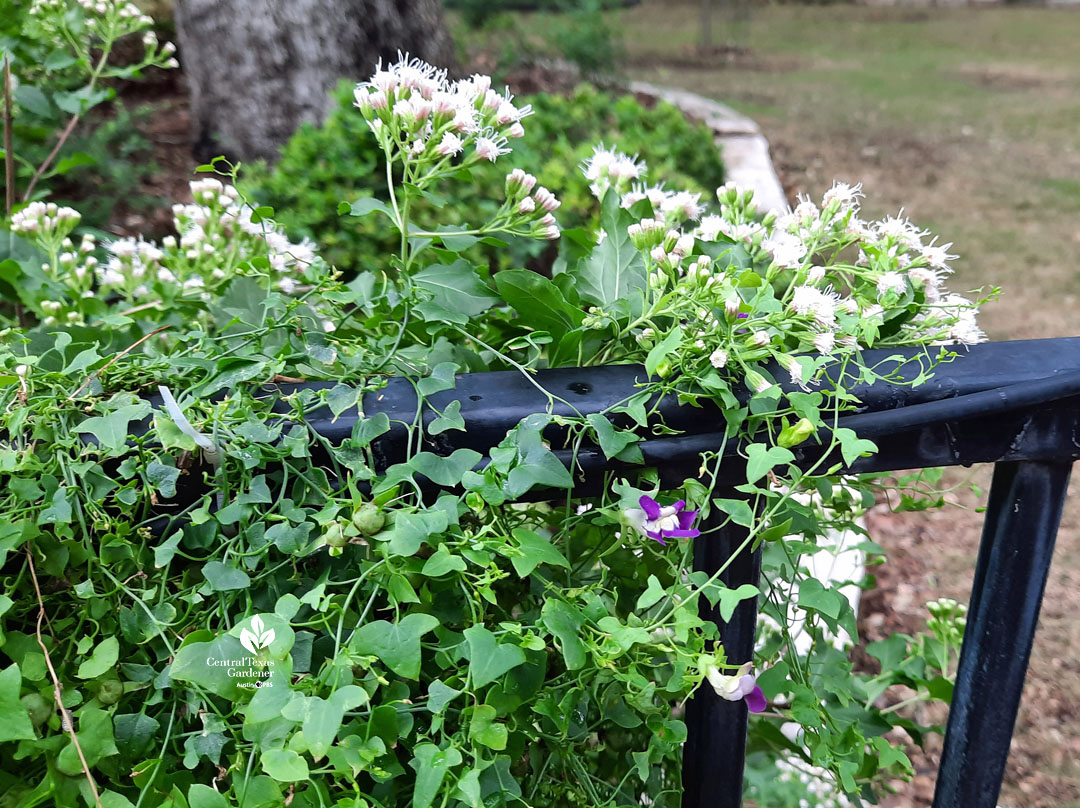
To my surprise, deer resist charming little native snapdragon vine.
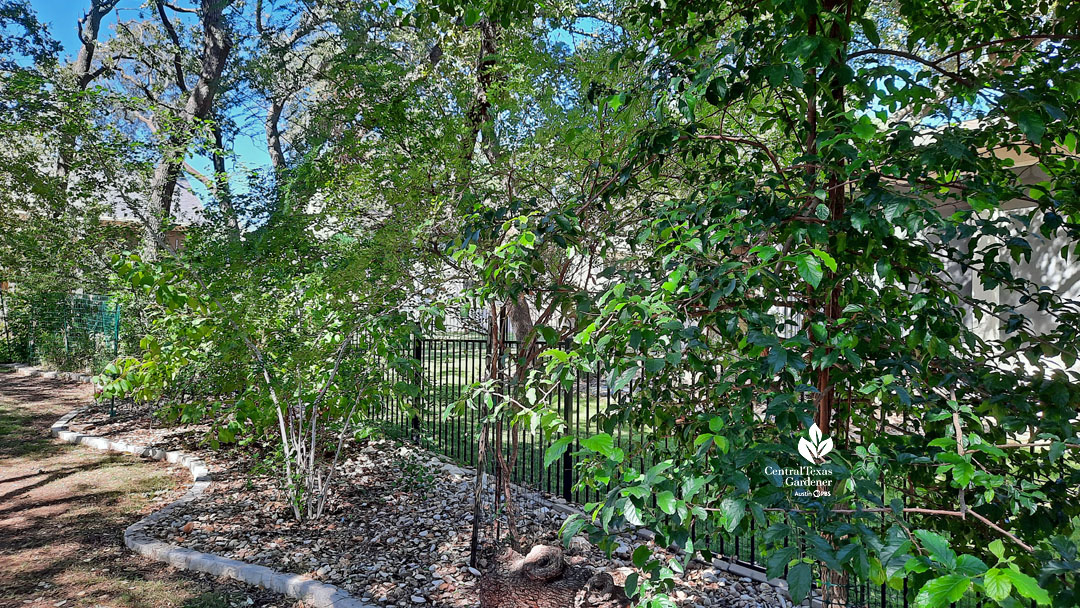
In back, he lined the fence with native understory trees for evergreen and seasonal interest. His strategy also thwarts deer. “Their eyes are on each side, so they need to see a landing place or they won’t jump over the fence,” Martin told us. Included: Texas redbud, possumhaw holly, sandpaper tree, goldenball leadtree, Anacacho orchid, American beautyberry, Texas persimmon, mountain laurel and roughleaf dogwood. There’s a cherry laurel at another side.
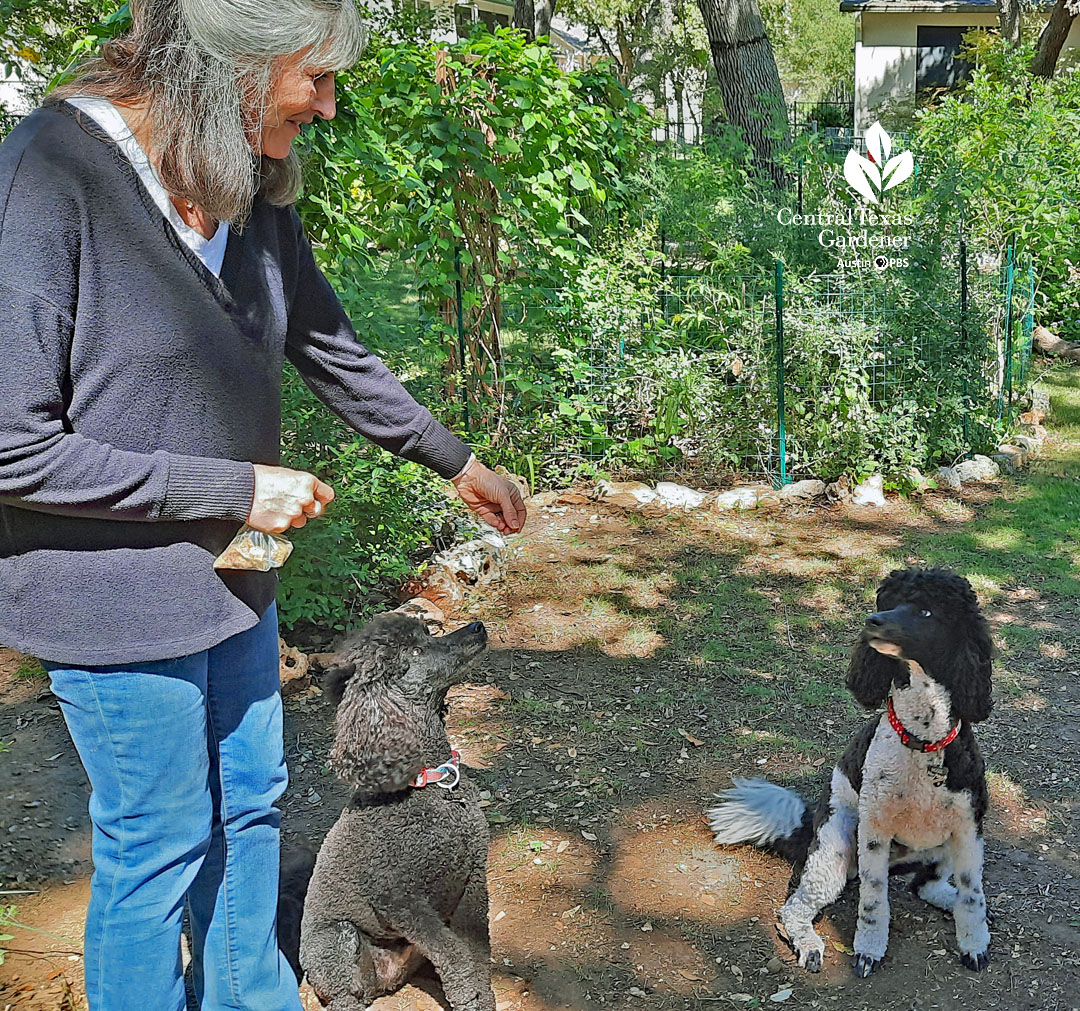
The backyard’s fairly shady with its own rainwater runoff issues. Also, cutie pie young standard poodles, Retro and Moose, love to bounce (rapidly) along the paths, so groundcovers don’t last. (I’ve had large, energetic dogs, so I knew the mud bath that Eileen and Martin faced.)
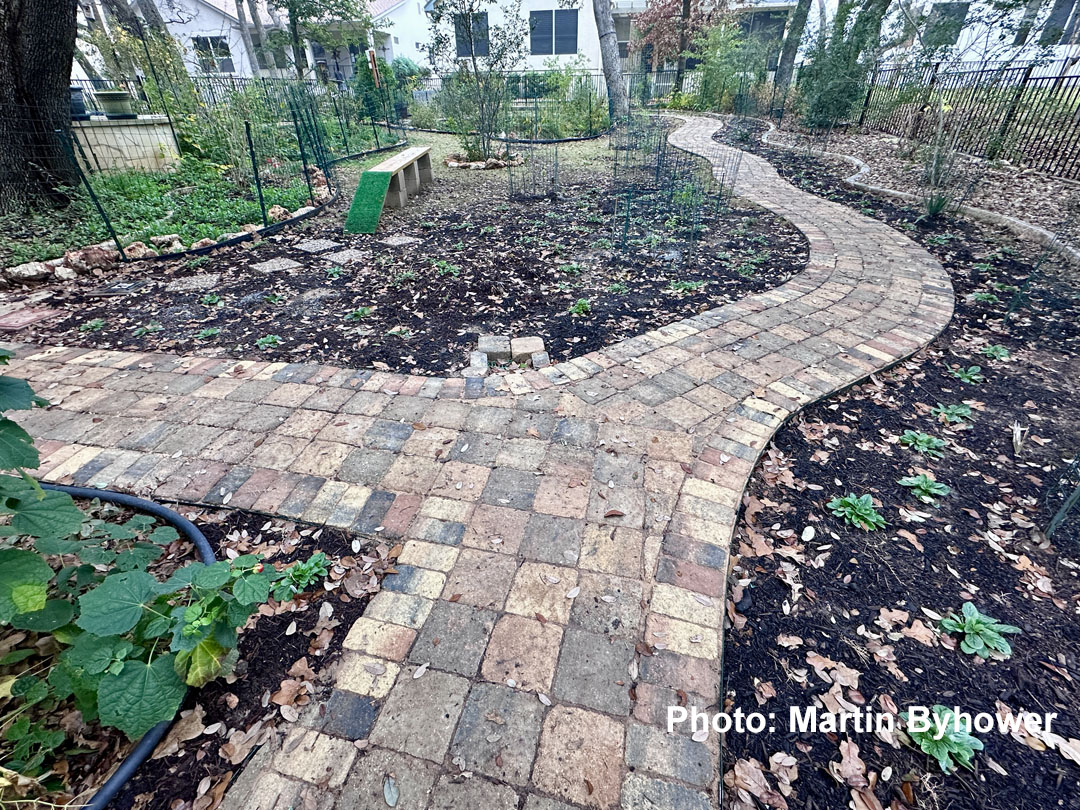
A few weeks later, they solved the messy mud path issue with winding paver paths, as lovely as they are practical!
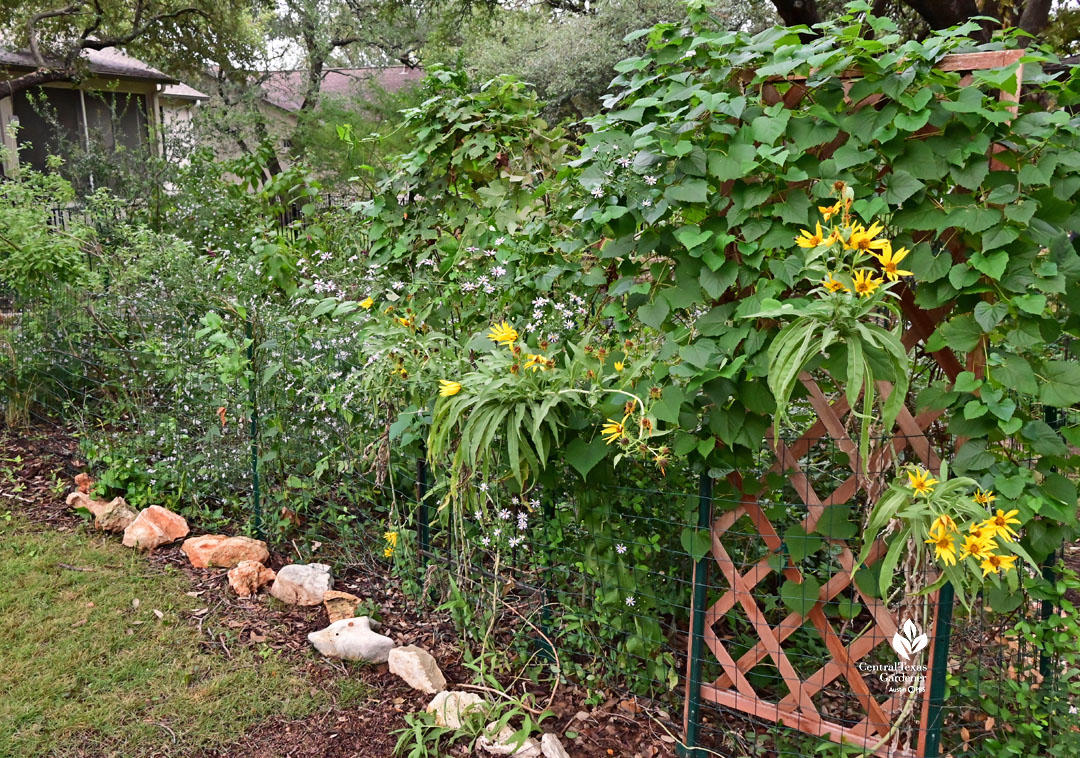
To protect some plants from pup detours into beds, Martin corralled them with metal cage mesh anchored with T-posts. Here’s Maximilian sunflower and Drummond’s aster.
Check out Martin’s website for plant lists, resources, and birds!
Watch his story now! (Broadcast premiere on October 19)
Thanks for stopping by! Linda
tags:

